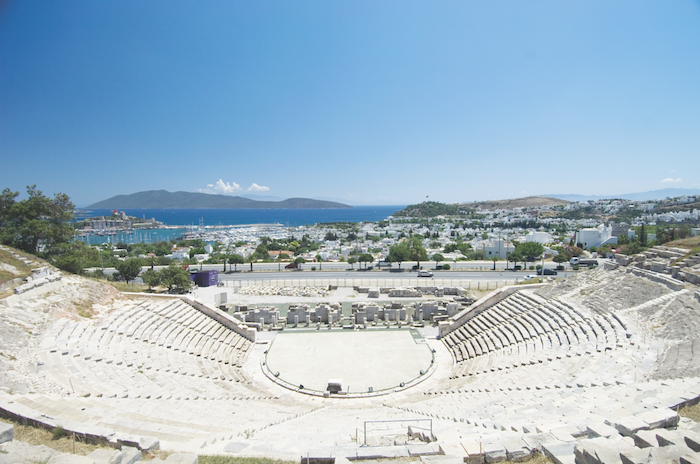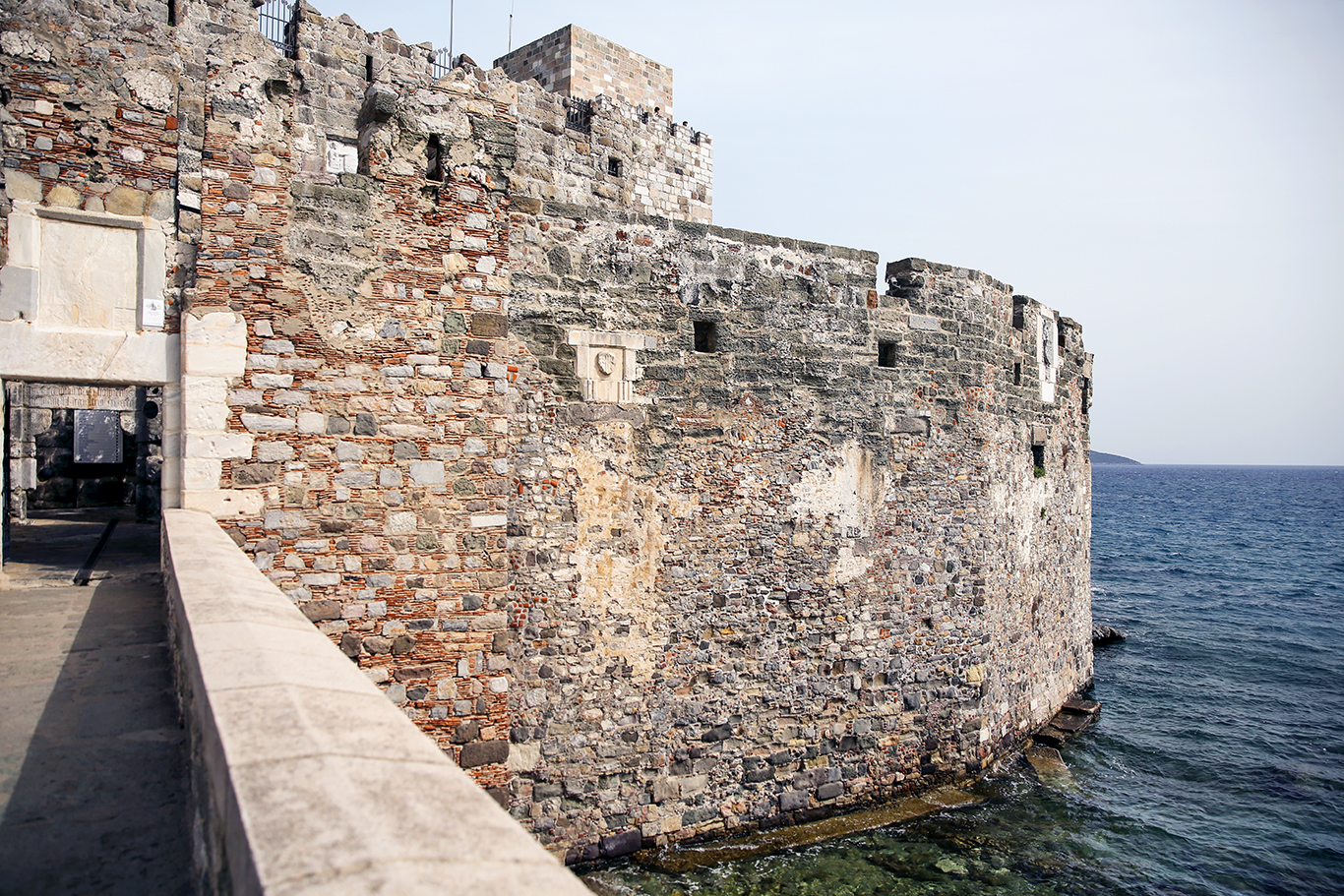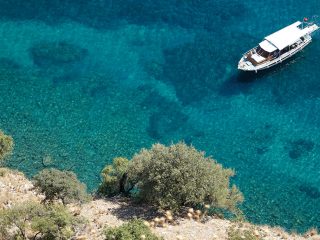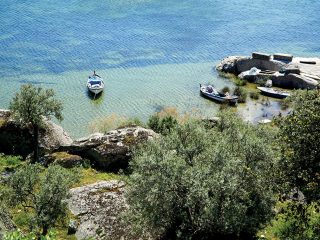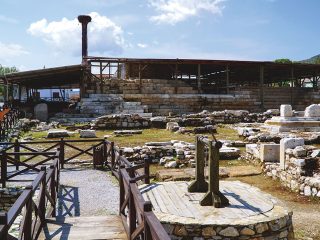Across the centuries, extraordinary civilizations have sprung up and died out around Muğla Province, leaving behind only remnants of their once-bustling society. Explore the secret grottoes that once watched over Cleopatra’s romantic dalliances, great walls defended by fearsome, stubborn kings and the other various crumbling edifices that have witnessed the ebb and flow of man.
Sedir Island
Noted for its natural and historical richness, Sedir Adası (adası means island) is off the coast of Marmaris and can be reached by boat from Gökova, Akyaka, or Çamlıköy. Also known as Cleopatra’s Island, the legend goes that the powerful pharaoh and her lover Marc Anthony used this secluded spot as a secret meeting point. Cleopatra is said to have swum in the cerulean waters and, in order to create the perfect beach, shipped pure white sand from Egypt’s Red Sea. Wander from the coast, and you’ll also find the Sanctuary of Apollo, an amphitheater and other Roman ruins.
Beçin
With a history that stretches back into 2000BC, Beçin is located on a hill perched above the city of Milas. Most striking is the Beçin castle. Originally a Byzantine fortress, it was remodeled by the Turkish emirs of Mentese, who used Beçin as their capital in the 14th century. Nearby you’ll find other of the main Mentese buildings, including the two story Kızılhan (Red Caravanserai), and the tomb and seminary of Ahmet Gazi who, along with his wife, is venerated as a minor Islamic saint.
Milas (Mylasa)
Both an ancient city and the seat of the district, Milas exhibits a rich spectrum of Roman, Byzantine, Seljuk, and Ottoman era history. The three and half meter high pillars and wall of the Zeus Carius temple, Baltalı Kapı (the ancient city’s northern gate), the Gümüşkesen Anıt Mezarı (mausoleum), the Çöllüoğlu Kervansarayı (18th century roadside inn), and the Ağa Camii (mosque), as well as the famous wooden Milas homes all compose the cultural heritage of the city.
Iasos
Located 28km from Milas toward the seaside, excavations uncovered remnants that date back to 3000BC. With a balance present among the restored historical ruins, the area’s natural landscape, and the city’s many fish restaurants, Iasos is a popular destination for locals and tourists. The ancient port also make for a dramatic view, while other important remains are on display at the museum.
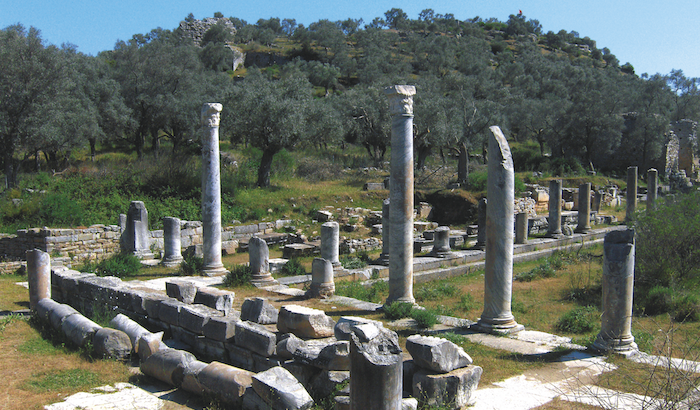
Herakleia
The ruins of monasteries, tombs and temples from the ancient city of Herakleia can be found dotted through the small village of Kapkırı. The former bustling city used to be a seaside town, before the land cut off access, leaving behind the salty Lake Bafa and a plethora of abandoned towns. The stunning city wall is a must see, stretching for more than six kilometers and boasting more than 40 towers.
Miletos
After the arrival of the Hellenistic civilization, this ancient city experienced a golden age in the 8th and 7th centuries BC. With the development of marine commerce, a rich cultural growth also took place, and today a beautiful theater and a recently restored Ottoman social complex can be visited. This is also the city of the Greek philosopher Thales, whose rejection of mythological explanation became the leading force of the scientific revolution.
Stratoniceia
In the Eskihisar village, on the Yatağan to Milas highway, ancient ruins from the era of Syrian King Seleucus I (3rd century BC) can be found. Even though some of the city’s remnants were used to build the city of Eskihisar, the historical presence is here is palpable.
